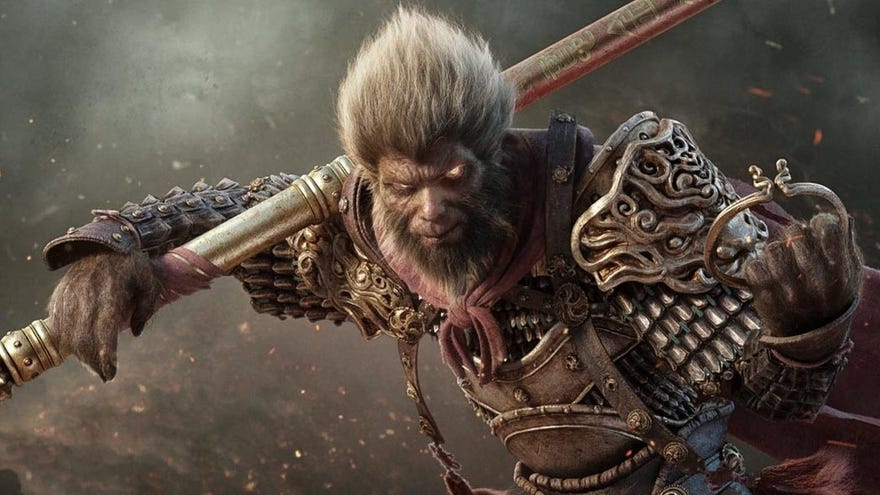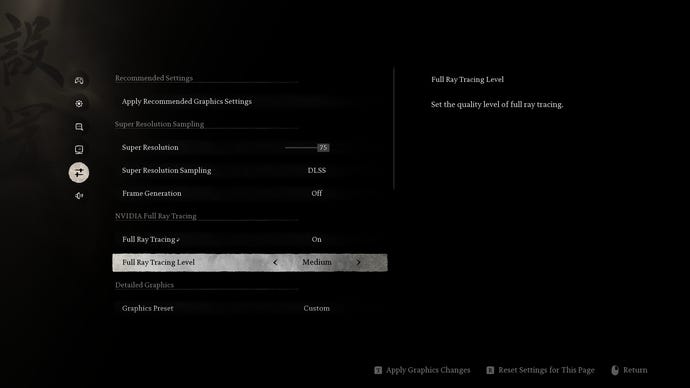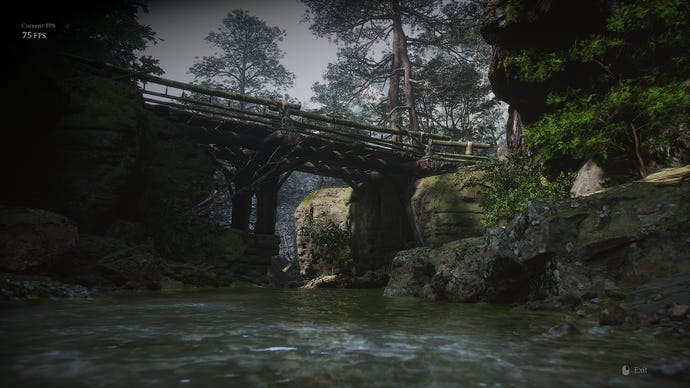HomeHardwareFeaturesBlack Myth: Wukong
Let’s beat some usefulness out that Black Myth: Wukong benchmark toolJourney to the Best… settings
Journey to the Best… settings
Image credit:Game Science
Image credit:Game Science

The tool does allow for tinkering with individual graphics settings, as well as fancier tricks likeray tracingand bothDLSS 3andFSR 3.1flavours of frame generation. But considering Wukong is a fighting-forwardSoulslike, the benchmark process is remarkably subdued, largely trundling down a quiet river with only brief glimpses of idling NPCs. There’s no way to judge, say, how a storm of boss-fight particle effects might tax a GPU, nor what would happen if you ignored the system requirements’SSDstipulation and tried playing off an old hard drive.
Image credit:Rock Paper Shotgun/Game Science

More broadly, the tool can also provide a glimpse into which specific settings will be worth lowering, should you want slicker performance than what the presets offer. Even if the benchmark isn’t the best demonstration of, say, visual effects, if you can get big framerate gains from dropping something thatisheavily represented – shadows, textures, reflections and so on – then it’s still a good bet that reducing those same settings will help speed up the full game.
To find out which options claimed the biggest performance impact, I started with an average of 36fps – that’s on the RTX 4060, at 1080p, using the highest Cinematic preset with DLSS at 75% - and re-ran the benchmark after changing each one individually. Here’s the results:
Sticking with just the quality settings for a moment, we can see that shadows, vegeation, and global illumination are the biggest framerate hogs of the bunch, and are therefore probable candidates for lowering in the full game. With all three on Medium at once, the rest remaining on Cinematic, my RTX 4060 put in a far smoother 75fps average. Obviously that exact figure could go up or down a bit in Wukong proper, but it’s very likely that those three settings will still present the biggest challenge to your rig.
Going into the more high-tech gubbins, DLSS looks like (once again) the best upscaling option, though if you don’t have a compatible RTXgraphics cardfor it, neither TSR or nor FSR are especially ugly alternatives. It’s also interesting how enabling ray tracing can slightlyimproveperformance over the Cinematic preset; normally RT effects are the GPU-heaviest things in the menu. Wukong being an Unreal Engine 5 game, it’s using Epic’s Lumen tech for its highest shadows and global illumination settings, and this can go just as hard as regular ray tracing on your GPU. If not more so, evidently. Opting for full ray tracing (orpath tracing, as it’s often called) seemingly replaces those Lumen effects, hence the minor performance bump.
Image credit:Rock Paper Shotgun/Game Science

So, theBlack Myth: Wukongbenchmark: not as pointless as it looks. I still wouldn’t assume that a solid 60fps in the tool equates to a solid 60fps in the final game, but once the latter releases on August 20th, at least you can go into it knowing which settings to cut if performance gets dicey.